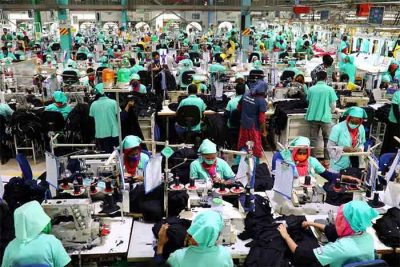Why Garment Workers in Bangladesh Are on Strike

All Global Research articles can be read in 51 languages by activating the Translate Website button below the author’s name (only available in desktop version).
To receive Global Research’s Daily Newsletter (selected articles), click here.
Click the share button above to email/forward this article to your friends and colleagues. Follow us on Instagram and Twitter and subscribe to our Telegram Channel. Feel free to repost and share widely Global Research articles.
Give Truth a Chance. Secure Your Access to Unchained News, Donate to Global Research.
***
[This article was originally published in November 2023.]
Bangladesh is a major producer of garments supplying to world’s top brands such as H & M, Lewis, Gucci, Zara and many others. Nearly 4.0 million workers, mostly women toil in 3,500 garment factories supplying nearly 60 percent of global trendy garments. A major resource of exports, Bangladesh earns earns nearly $ 55 billion from exports annually.
However, the working conditions of the workers are dire work day stretching ten hours, with a meagre monthly pay of Taka 8,300 or $ 75. Though 85 percent of workforce are women, they lack job security, bonus, work safety insurance or maternity leave and other minimum benefits. The workers are on strike or the last two weeks demanding wage hikes. Fresh in the memory the horrific Rana Plaza accident in Dhaka, 2013, where a building buildings collapsed and On 24 April 2013, 1,134 people were killed and at least another 2,000 injured in the collapse of a nine storeyed garment factory building crammed with thousands of workers. The horrific incident in Dhaka resulted in death of 1,100 workers, mostly women and another 2,500 seriously injured. Even after a decade, majority of affected families have not been paid any compensation. As current inflation is touching 10 percentage points, prices of food, house rents have nearly doubled during the last three years. As the Taka depreciated by 30 percent against the US dollar since last year, the cost of living soared and wages are stagnant say the Union leaders. As Labour ministry authorities, factory owners and garment exporters are reluctant to demands, workers continue to protest and even in hotspots like Ghazipur turned violent. Two workers were killed in protests and four factories torched the situation is becoming tense.
A few days back I walked in to a H&M fashion outlet in Hyderabad and cost of a trendy grey cotton shirt Rs. 1950. A worker, in a typical garment sweatshop stretches nearly 60 shirts a day. Amazing the monthly salary of a worker is less than half the price of this cotton shirt. The cotton is produced locally and the labour wages are low, but the top global garment fashion brands earn tens of billions of dollars. And no comments from these global Multinational firms on workers demands.
While the Trade unions are demanding to triple the wages, the labour ministry and factory owners are ready to increase only by 25 percent. And the worker are not agreeing and the strike is continuing.
From the textile mills of Liverpool since the beginning of industrial revolution, the conditions in sweatshops are alive in garment factories of developing countries. Capitalism in today’s neoliberal era is making huge profits by extracting higher surplus value while keeping primitive work conditions. Strangely, the global top garment lobby is silent on workers protests and statements on minimum wages, fair working conditions they want are limited to statements with no implementation on the floors of sweatshops.
Public in West should come in support of garment workers sourced to top fashion brands.
*
Note to readers: Please click the share button above. Follow us on Instagram and Twitter and subscribe to our Telegram Channel. Feel free to repost and share widely Global Research articles.
Dr. Soma Marla is a scientist based in Hyderabad, India.
Featured image is from Countercurrents

